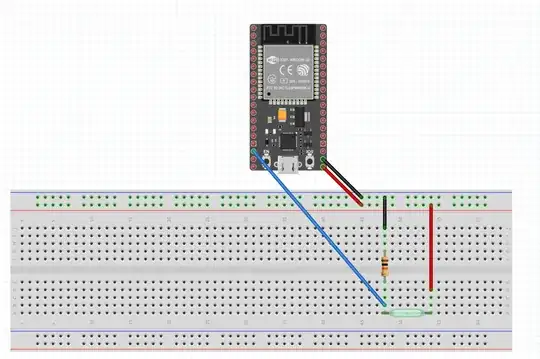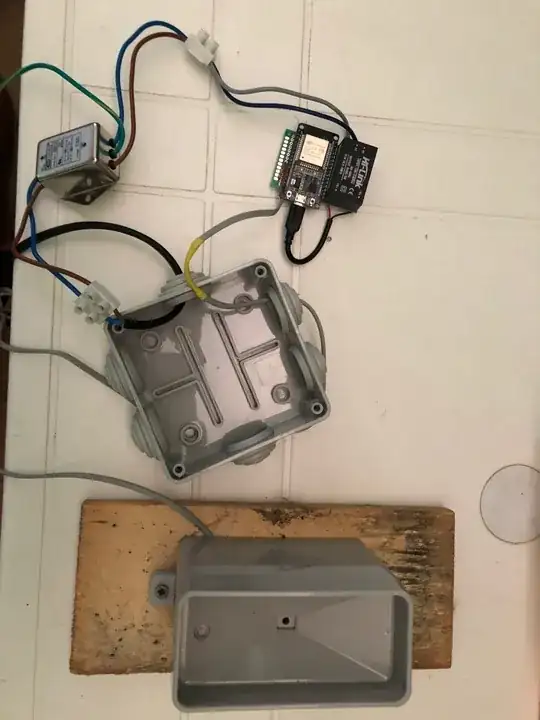I've realized a simple circuit like the following, in order to implement a rain gauge that I can access via HTTP:
With the following sketch:
#include <WebServer.h>
#include <WiFi.h>
#include <WiFiClient.h>
/**
* This constant is calculated with the following procedure:
* - Area of pluviometer is 55 cm^2
* - Volume of test water is 100 cm^2
* Resulting height of water is 1.82 cm. Using this water quantity, generates 40 ticks of the pluviometer. So every tick is 0.455 mm of rain.
*/
const double millimetersPerTick = 0.455;
const char* ssid = "*********";
const char* password = "*********";
WebServer server(80);
/* LED pin */
byte ledPin = 2;
/* pin that is attached to interrupt */
byte interruptPin = 14;
/* hold the state of LED when toggling */
volatile byte state = LOW;
volatile int interruptCounter = 0;
int numberOfInterrupts = 0;
portMUX_TYPE mux = portMUX_INITIALIZER_UNLOCKED;
void IRAM_ATTR handleInterrupt() {
portENTER_CRITICAL_ISR(&mux);
interruptCounter++;
portEXIT_CRITICAL_ISR(&mux);
}
void setup() {
Serial.begin(115200);
// WIFI initialization
WiFi.mode(WIFI_STA);
WiFi.begin(ssid, password);
// Wait for connection
while (WiFi.status() != WL_CONNECTED) {
delay(500);
Serial.print(".");
}
Serial.println("");
Serial.print("Connected to ");
Serial.println(ssid);
Serial.print("IP address: ");
Serial.println(WiFi.localIP());
pinMode(ledPin, OUTPUT);
/* set the interrupt pin as input pullup*/
pinMode(interruptPin, INPUT_PULLUP);
/* attach interrupt to the pin
function blink will be invoked when interrupt occurs
interrupt occurs whenever the pin change value */
// Notify wifi connection
digitalWrite(ledPin, HIGH);
delay(2000);
digitalWrite(ledPin, LOW);
attachInterrupt(digitalPinToInterrupt(interruptPin), handleInterrupt, RISING);
server.on("/", []() {
server.send(200, "text/plain", String(millimetersPerTick * numberOfInterrupts));
numberOfInterrupts = 0;
});
server.onNotFound([]() {
server.send(404, "text/plain", "Not found");
});
server.begin();
}
void loop() {
server.handleClient();
if(interruptCounter>0) {
portENTER_CRITICAL(&mux);
interruptCounter--;
portEXIT_CRITICAL(&mux);
numberOfInterrupts++;
Serial.print("An interrupt has occurred. Total: ");
Serial.println(numberOfInterrupts);
state = !state;
digitalWrite(ledPin, state);
delay(100);
state = !state;
digitalWrite(ledPin, state);
}
}
The main issue of this circuit is that if I connect the AC plug it suffers from interferences from the household electricity. For example if I turn on the light, the interrupt is called. I tried also to buy an EMI filter like this but it doesn't reduce the problem. What can I do to avoid this?


